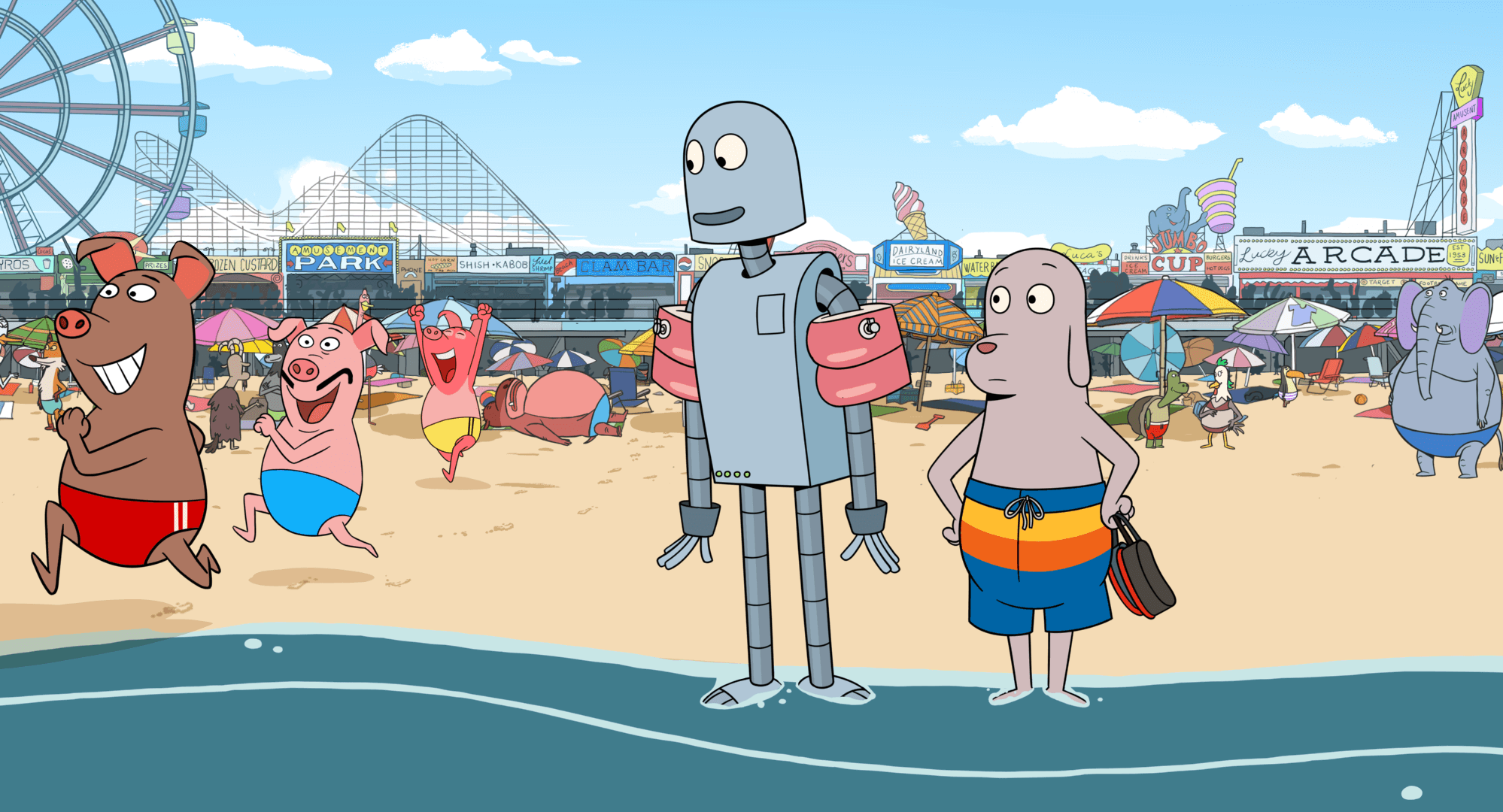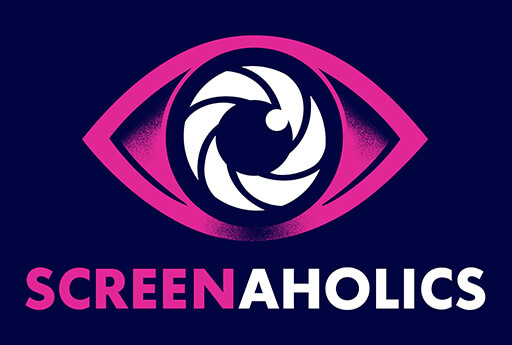Robot Dreams captures the essence of friendship, longing, and the transformative power of companionship—all without a single word of dialogue.
This film reminds me of why I love cinema. The simple projection of light on canvas can reach out at you from the safety of a cinema seat and turn your heart inside out. In a darkened room, in the company of strangers, you can be changed. Jean-Luc Godard said, “cinema is the truth in 24 frames per second”, and he’s right. It’s just that sometimes the truth, and a pang in the heart, is delivered by a mute animated dog and his salt-water-corroded, rollerblading robot buddy. The realisation can be jarring.

Set against the backdrop of 1980s New York City, the story begins with the aptly named Dog, who ekes out an existence with unsatisfying games of single-player Pong and frozen microwaved dinners. From the third story of his East Village apartment, Dog witnesses a lively, bustling city that beckons just outside his window, but he has no one to share it with. Yearning for companionship, a well-timed advertisement for the Amica 2000 robot companion spurs Dog to action.
After assembling his robot, the pair embark on a journey of discovery through New York City, sound-tracked by Earth, Wind, and Fire’s “September.” From subway stations and mo-hawked punks to street hotdogs and Central Park roller skating, Dog teaches Robot all that New York has to offer. Their blossoming friendship is soon cut short, however, following Robot’s encounter with saltwater at Coney Island. Immobilised on the beach, Dog’s attempts to repair Robot are thwarted by the closing of the beach for the season, leaving Robot stuck on the sand.
Beached on the sand, Robot dreams of reuniting with Dog. At home, Dog marks his calendar, counting down the days until their reunion. In their separation, they both await the day they can be together again. What follows is a profound display of separation, loneliness, and the bittersweet, transient nature of our deepest relationships.

Plot-wise, the Robot Dreams relies heavily on the relationship between Dog and Robot. Once the main characters are separated early in the film, it slows dramatically. Dog’s brief interactions with other characters like a Snowman and a Duck expand the world but don’t resonate as strongly. A slightly shorter runtime might have helped these character vignettes feel less like an animated short stretched just beyond its welcome. While the initial charm of the first act may wear off during the slow middle, the buildup to the emotional ending is still worth the journey.
Visually, the animation style resembles a Saturday morning cartoon. It’s not bland, but not awe-inspiring either. The film is fun to watch regardless of its presentation, which isn’t fundamentally bad. The style simply isn’t mind-blowing in the way that animation is unfairly expected to be on the big screen. Accurately replicating the original graphic novel’s style, the film never really feels like it could have been improved by a sheen of Pixar animation, and remaining loyal to the source feels like a good move.
The direction and animation expertly humanise both Robot and Dog, as they exude qualities of vulnerability, hope, and despair without a spoken word. Notably, the background of almost all scenes offers numerous Easter eggs, references, and background character moments that justify a rewatch all on their own.

While the lack of dialogue may certainly alienate younger viewers, this choice suggests one thing that should resonate with older viewers: what we do means more than what we say. The lack of speaking also makes the city a focal point, as the environment becomes more apparent. There is a lot of love given to New York City of the 1980s, pairing poetically with the themes of nostalgia and the past. The twin buildings of the World Trade Center prominently postured in the city’s skyline remind us of a city that exists only in memory. The way New York is presented, you would be forgiven for feeling nostalgia for a 2D representation of a city you’ve never been to in a decade you might not have lived through.
There is a sentiment that often disregards animation as art made for children, or not a real film. This is evidenced by award ceremonies typically segregating animated films to solitary confinement to compete against one another while the adult table in gen-pop duke it out for best picture. On the balance of output, it may be correct to assume that animation is child focused. However, to write this off as bright colours masquerading as babysitter-by-television designed to distract young eyes would be to almost intentionally overlook the emotional storytelling and beautiful themes of the film. This is, in fact, not CoComelon.

Robot Dreams explores deeper themes than its packaging suggests, reminding the audience that love is also letting go. Remembering what was is fine, but to live in the present is necessary. There is no deeper pain than holding on to what could have been. Despite moving on, those we love deeply never really leave us. While physically absent, people linger in our hearts and memories, whether friend or lover. Defying cliché, we truly become the sum of our relationships and those we’ve loved the deepest.
We carry the moments and memories of days gone by within us, often without recognition. Robot quite literally carries Earth, Wind, and Fire’s “September” cassette tape in his chest after his torso is replaced with a boombox. Titled “Robot’s Favourites”, it is a reminder of the things we absorb vicariously through proximity with others that become part of our personality, our daily lives and even carry into our new relationships once the old is no longer.

Whether it’s a song, a movie, or a way of talking, the pangs in your heart when something innocuous reminds you of someone—that’s what Robot Dreams digs into and pulls out. The ache of distance, exacerbated by time. People and places you thought would be with you forever, until, through sudden loss or long-term drift, they weren’t.
It reminds you that there are people you should probably call, but knowing when you call, they might not be the person from your memory. Their lives, just like yours, have gone on. The people, places, and life they are living is a journey you weren’t invited on forever, just briefly. All you might have is the goodwill to hope that they’re happy. Without malice, that’s just how life goes sometimes.
It’s okay if what was, may never be again, and will only ever exist in your heart, and in your dreams.
If that’s not a real film, I don’t know what is.
Fun Fact:
Dog carries a bag in the early portions of this film which has a logo on it. That logo is Naranjito the mascot for the España ’82 Football World Cup. A nod to Director Pablo Berger’s homeland.




COMMENTS